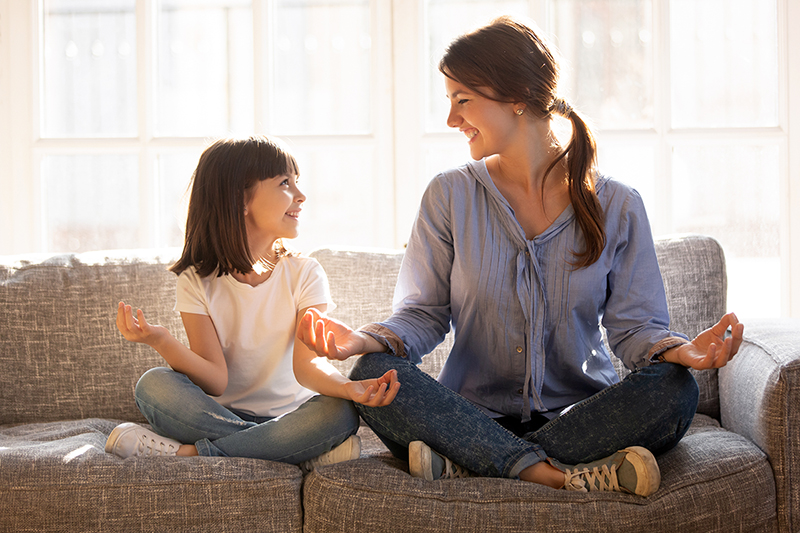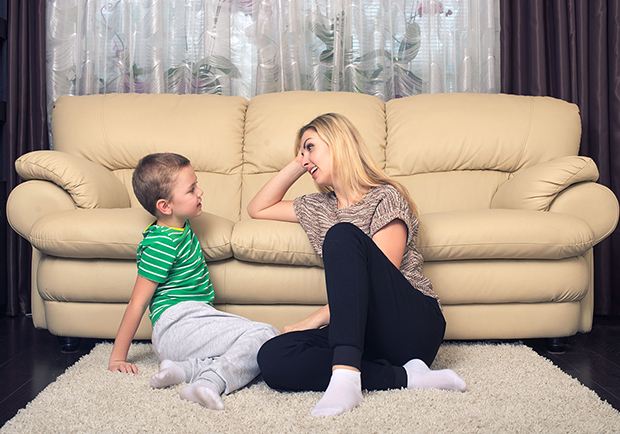Easy Mindfulness Practices for Kids
Teaching your kids mindfulness doesn’t have to be complicated. Here are six ways to get started.

Did you know that kids are capable of experiencing anxiety and stress? If your child is experiencing mood swings, obsessive thoughts, or frequent worrying, practicing mindfulness can help calm their mind and body.
Simply defined, mindfulness is being aware of your thoughts and physical response during a given moment without judgment or interruptions. Practicing mindfulness also helps you respond to your circumstances in a healthy way.
There are many benefits of mindfulness. In fact, studies have shown kids who practice mindfulness and live in the present moment have increased focus, improved academic performance, and lower levels of anxiety.
For kids, practicing mindfulness may be hard to grasp at first, but there are simple ways you can teach your child simple mindfulness practices.
Related: How to Recognize and Manage Anxiety in Children
Do a body scan
Doing a body scan is a great way to help kids reconnect to their bodies by recognizing sensations they’re feeling.
Start by lying down with your child and be relaxed with closed eyes. To help them focus on the present moment, you may ask them to put their hands on their stomach as they breathe.
After a few deep breaths, check in with, or “scan,” one body part at a time. Start from the head and move to the toes.
As you make your way down to the feet, try asking your child questions like, “Can you feel your heartbeat? Do you feel heaviness or pain in this area? Or does it feel light and free?”
Scrunching their nose, wiggling their fingers or toes, or puckering their lips can help draw attention to those areas of their body. Once they get the hang of this practice, they can start to do it on their own.
Breathe with your belly
Belly breathing helps your child slow down and focus on the present moment. This way of deep breathing engages more of the body by filling both the chest cavity and belly with oxygen.
Not only does belly breathing help kids focus, it also reduces their heart rate and signals their bodies to relax.
Practice removing judgment and criticism
Kids are not as likely to attach negative judgments to their thoughts and circumstances as adults generally do. Because a child’s mind is less judgmental than an adult’s mind, kids easily embrace curiosity and observe the world around them.
As your child explores and observes the world around them without judgment, they will easily grow into practicing mindfulness.
Blow bubbles
Blowing bubbles is an effective, visual way to teach your child how to be mindful and release uncomfortable emotions they’re feeling.
When your child’s upset or having trouble letting go of emotions, grab a bottle of bubbles and ask your child what he or she is feeling. Are they angry? Frustrated? Sad?
As your kids practice vulnerability by vocalizing their emotions, call the emotions out as your blow the bubbles. As the bubbles float away and pop, say, “We’re letting anger go and watching it float away until it’s gone.”
Journal about the day’s events
When your children are trying to cope with difficult emotions, a mindful tactic is to journal about their emotions and what events may has caused them.
Journaling allows your kids to let go of the situations weighing on their minds. It also gives them an opportunity to reflect, identify their emotions, and find new solutions.
Check in with your senses
Practicing mindfulness is all about checking in with your five senses—sight, smell, taste, hear, and touch.Encourage your child to take a few deep breaths. After, ask what they notice around them.
Helping kids pay attention to their senses intentionally and nonjudgmentally helps them focus on the present moment and not on their thoughts.
Related: Yes. There Is a Difference Between Mindfulness and Meditation
These are just several of many ways you can teach your kids to be mindful—and each child will respond to various practices differently. But the more you practice with them, the more easily they’ll manage their emotions and live in the fullness of the present moment.






